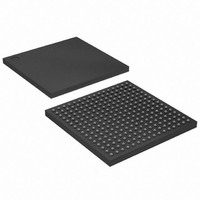XC3S250E-4FTG256C Xilinx Inc, XC3S250E-4FTG256C Datasheet - Page 20

XC3S250E-4FTG256C
Manufacturer Part Number
XC3S250E-4FTG256C
Description
IC SPARTAN-3E FPGA 250K 256-FTBG
Manufacturer
Xilinx Inc
Series
Spartan™-3Er
Datasheet
1.XC3S100E-4VQG100C.pdf
(233 pages)
Specifications of XC3S250E-4FTG256C
Total Ram Bits
221184
Number Of Logic Elements/cells
5508
Number Of Labs/clbs
612
Number Of I /o
172
Number Of Gates
250000
Voltage - Supply
1.14 V ~ 1.26 V
Mounting Type
Surface Mount
Operating Temperature
0°C ~ 85°C
Package / Case
256-LBGA
No. Of Logic Blocks
5508
No. Of Gates
250000
No. Of Macrocells
5508
No. Of Speed Grades
4
No. Of I/o's
190
Clock Management
DLL
Lead Free Status / RoHS Status
Lead free / RoHS Compliant
Other names
122-1482
Available stocks
Company
Part Number
Manufacturer
Quantity
Price
Company:
Part Number:
XC3S250E-4FTG256C
Manufacturer:
TOS
Quantity:
3 012
Company:
Part Number:
XC3S250E-4FTG256C
Manufacturer:
XILINX
Quantity:
281
Part Number:
XC3S250E-4FTG256C
Manufacturer:
ALTERA/阿尔特拉
Quantity:
20 000
Functional Description
exception for differential inputs (IP_Lxxx_x). For the differ-
ential Dedicated Inputs, the on-chip differential termination
is not available. To replace the on-chip differential termina-
tion, choose a differential pair that supports outputs
(IO_Lxxx_x) or use an external 100Ω termination resistor on
the board.
ESD Protection
Clamp diodes protect all device pads against damage from
Electro-Static Discharge (ESD) as well as excessive voltage
transients. Each I/O has two clamp diodes: one diode
extends P-to-N from the pad to V
extends N-to-P from the pad to GND. During operation,
these diodes are normally biased in the off state. These
clamp diodes are always connected to the pad, regardless
of the signal standard selected. The presence of diodes lim-
its the ability of Spartan-3E I/Os to tolerate high signal volt-
ages. The V
and Switching Characteristics
voltage range that I/Os can tolerate.
Supply Voltages for the IOBs
The IOBs are powered by three supplies:
1. The V
2. V
3. V
I/O and Input-Only Pin Behavior During
Power-On, Configuration, and User Mode
In this section, all behavior described for I/O pins also
applies to input-only pins and dual-purpose I/O pins that are
not actively involved in the currently-selected configuration
mode.
All I/O pins have ESD clamp diodes to their respective V
supply and from GND, as shown in
(1.2V), V
any order. Before the FPGA can start its configuration pro-
cess, V
their respective minimum recommended operating levels
indicated in
high-impedance state. V
serve as inputs to the internal Power-On Reset circuit
(POR).
20
banks, power the output drivers. The voltage on the
V
signal.
logic.
optimize the performance of various FPGA functions
such as I/O switching.
CCO
CCINT
CCAUX
CCINT
CCAUX
CCO
pins determines the voltage swing of the output
is the main power supply for the FPGA’s internal
Table
IN
is an auxiliary source of power, primarily to
, V
supplies, one for each of the FPGA’s I/O
absolute maximum rating in
CCO
(2.5V), and V
74. At this time, all output drivers are in a
Bank 2, and V
CCO
CCO
Bank 2, V
supplies can be applied in
CCAUX
CCO
(Module 3) specifies the
Figure
and a second diode
CCINT
must have reached
Table 73
5. The V
, and V
CCAUX
of
CCINT
www.xilinx.com
CCO
DC
A Low level applied to the HSWAP input enables pull-up
resistors on user-I/O and input-only pins from power-on
throughout configuration. A High level on HSWAP disables
the pull-up resistors, allowing the I/Os to float. HSWAP con-
tains an internal pull-up resistor and defaults to High if left
floating. As soon as power is applied, the FPGA begins ini-
tializing its configuration memory. At the same time, the
FPGA internally asserts the Global Set-Reset (GSR), which
asynchronously resets all IOB storage elements to a default
Low state. Also see
Upon the completion of initialization and the beginning of
configuration, INIT_B goes High, sampling the M0, M1, and
M2 inputs to determine the configuration mode. Configura-
tion data is then loaded into the FPGA. The I/O drivers
remain in a high-impedance state (with or without pull-up
resistors, as determined by the HSWAP input) throughout
configuration.
At the end of configuration, the GSR net is released, placing
the IOB registers in a Low state by default, unless the
loaded design reverses the polarity of their respective SR
inputs.
The Global Three State (GTS) net is released during
Start-Up, marking the end of configuration and the begin-
ning of design operation in the User mode. After the GTS
net is released, all user I/Os go active while all unused I/Os
are pulled down (PULLDOWN). The designer can control
how the unused I/Os are terminated after GTS is released
by setting the Bitstream Generator (BitGen) option Unused-
Pin to PULLUP, PULLDOWN, or FLOAT.
One clock cycle later (default), the Global Write Enable
(GWE) net is released allowing the RAM and registers to
change states. Once in User mode, any pull-up resistors
enabled by HSWAP revert to the user settings and HSWAP
is available as a general-purpose I/O. For more information
on PULLUP and PULLDOWN, see
Resistors.
Behavior of Unused I/O Pins After
Configuration
By default, the Xilinx ISE development software automati-
cally configures all unused I/O pins as input pins with indi-
vidual internal pull-down resistors to GND.
This default behavior is controlled by the UnusedPin bit-
stream generator (BitGen) option, as described in
JTAG Boundary-Scan Capability
All Spartan-3E IOBs support boundary-scan testing com-
patible with IEEE 1149.1/1532 standards. During bound-
ary-scan operations such as EXTEST and HIGHZ the
pull-down resistor is active. See
mation on programming via JTAG.
Pin Behavior During
DS312-2 (v3.8) August 26, 2009
JTAG Mode
Pull-Up and Pull-Down
Product Specification
Configuration.
for more infor-
Table
69.
R

















